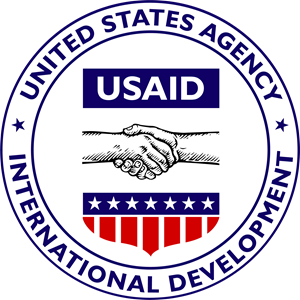What Every American Should Know about U.S. Foreign Aid
This piece was orginally published in The Ripon Forum. Written by George Ingram.

Seventy-five years of U.S. foreign assistance has produced more fiction than fact when it comes to how American tax dollars are being spent around the world.
In the interest of providing taxpayers with information about the value of their federal investment in this regard, it might be helpful to look at some of the top myths surrounding foreign aid, and how these myths compare with reality.
Myth #1: America spends too much on foreign aid

Opinion polls consistently report that Americans believe foreign aid is in the range of 25% of the federal budget. When asked how much it should be, they say about 10%. In fact, at $39.2 billion for fiscal year 2019, foreign assistance is less than 1% of the federal budget.
Myth #2: Others don't do their fair share
The U.S. provides more assistance than any other country. As the world's wealthiest nation, that's appropriate. There is a broad international commitment that wealthy countries should provide annually 0.7% (7/10ths of one percent) of GNP to assist poor countries. Five countries (Norway, Sweden, Luxembourg, Denmark, and the U.K.) exceed that benchmark. The average for all wealthy nations is around 0.4%. The U.S. ranks near the bottom at below 0.2%.
Myth #3: U.S. foreign aid is mainly backed by Democrats

Foreign aid historically has been viewed more as a Democratic than Republican program. The Marshall Plan was initiated by the Truman Administration, and in the 1990s, when votes in the Congress on foreign aid spending were close, the appropriations bill garnered more Democratic than Republican votes. But every president, Democratic and Republican, until the current occupant of the White House, has been a strong proponent of foreign assistance.
In fact, some of the most rapid increases in foreign aid have come during Republican presidencies - the first term of Reagan and Bush 43. Since the creation in the early 2000s of President Bush's signature popular and successful programs of the Millennium Challenge Corporation (MCC), the President's Emergency Plan for AIDS Relief (PEPFAR), and the President's Malaria Program (PMI), foreign aid now also carries a Republican brand and has received overwhelming congressional support from both parties, including bipartisan rejection of the 1/3 cuts to international spending proposed by the Trump Administration.
Myth #4: Foreign aid goes to corrupt, wasteful governments

Only a minority of U.S. economic assistance goes to governments. In 2018, 21% of U.S. official development assistance went to governments, 20% to non-profit organizations, 34% to multilateral organizations, and 25% elsewhere. Typically, when the U.S. wants to support a country that is ruled by a corrupt, uncooperative, or autocratic government, U.S. assistance goes through private channels - NGOs or other private entities - or multilateral organizations. Accountability of U.S. economic assistance is high - the U.S. imposes stringent, some would say onerous, reporting and accounting requirements on recipients of U.S. assistance, and the office of the U.S. inspector general (IG) investigates misuse.
Myth #5: Foreign aid goes to autocratic governments
There was definitely truth to this during the Cold War, when foreign assistance was often driven by the premise that "the enemy of my enemy is my friend" no matter what the nature of the government. That substantially changed in the 1990s following the demise of the Soviet Union. However, there is reason to be concerned that obliviousness to autocracy is reappearing with the post-9/11 concern over terrorism.
Myth #6: Foreign aid is wasted, inefficient, and produces no concrete results

The U.S. government requires regular monitoring and reporting on how and whether assistance programs are working, and periodic evaluations of results. There is hard evidence that development and humanitarian programs produce considerable results, less so for programs driven for foreign policy and security purposes. While U.S. assistance is by no means the sole driver, the record of global development results is impressive. These results include:
- Extreme poverty has fallen dramatically over the past 30 years - from 1.9 billion people (36% of the world's population) in 1990 to 736 million (10%) in 2015
- Maternal, infant, and child mortality rates have been cut in half
- Life expectancy globally rose from 65 years in 1990 to 72 in 2017
- Small pox has been defeated; polio eliminated in all but two countries; deaths from malaria cut in half from 2000 to 2017
- The U.S. PEPFAR program has saved 17 million lives from HIV/AIDS and enabled 2.4 million babies to be born HIV-free.
Myth #7: Foreign aid is for the benefit of foreigners and not aligned with U.S. interests
Assistance is provided to support security as well as economic and political development of recipient countries and people. However, that assistance also advances one or all of the following three overriding U.S. interests:
- Contributing to U.S. national security by supporting allies in promoting regional and global stability and peace
- Reflecting the core U.S. value of caring for others in need - providing humanitarian assistance to victims of war, violence, famine, and natural disasters
- Advancing U.S. and recipient economic interests by building economies and markets
Myth #8: Foreign aid is unpopular
While the term foreign aid is not popular and polling reveals that some feel our foreign policy is overextended, Americans support U.S. active engagement in the world. A substantial majority of those polled support working collaboratively with other nations.
Assistance for humanitarian purposes receives overwhelming approval, and support is strong for specific purposes such as improving people's health, helping women and girls, educating children, and helping poor countries develop their economies. What receives less support is assistance for strategic purposes.
